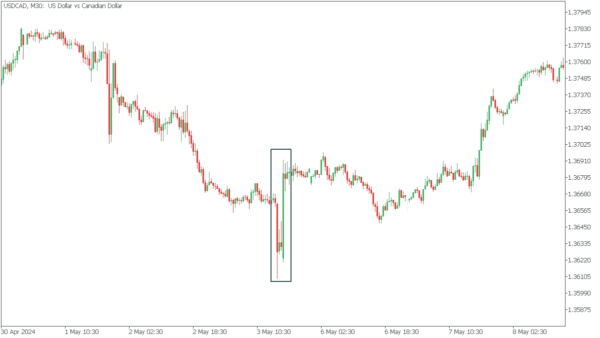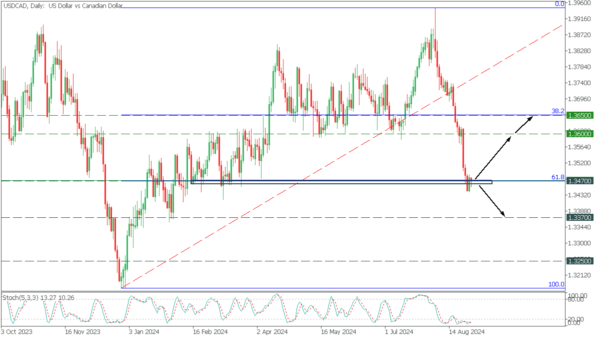USDCAD is setting up for significant market moves—stay alert!
The USDCAD pair, often referred to by traders as the “Loonie,” reflects the exchange rate between the US and Canadian dollars. This pair is a vital indicator of the economic ties between the United States and Canada. The US Dollar is primarily influenced by US economic data, such as employment figures, inflation rates, and Federal Reserve monetary policy decisions. On the other hand, the Canadian Dollar is strongly affected by global oil prices, given Canada’s position as a significant oil exporter, alongside domestic economic indicators like GDP growth and employment rates.
Canada Interest Rate Decision, Sep 04, 15:45 (GMT+2)
The upcoming interest rate decision in Canada is predicted to keep the current rate at 4.5%, indicating that the Canadian economy is stable. If the actual rate decision confirms this forecast and the rate remains unchanged, it could mean that the Bank of Canada (BoC) considers current economic conditions balanced, resulting in a neutral impact on the Canadian Dollar. Given that inflation is falling, this is unlikely. Still, if the Bank of Canada unexpectedly decides to raise rates, this would likely lead to a rise in the Canadian Dollar and a decline in the USDCAD pair. Conversely, if the Bank of Canada cuts rates, which would be a surprise move, it could signal concerns about economic growth or inflation, weakening the CAD.
US Nonfarm Payrolls, Sep 06, 14:30 (GMT+2)
The US NFP is expected to show an increase of 163k jobs, reflecting the potential strength of the US labor market. If the actual NFP data exceeds this forecast, indicating stronger job creation, this would strengthen the USDCAD. It would indicate solid economic growth and could lead to speculation that the Federal Reserve may consider continuing to keep the interest rate unchanged at current levels. On the other hand, if the NFP report fails to meet expectations and the number of jobs is less than 163k, it could raise concerns about the dynamics of the US economy, leading to a weaker USD as market participants expect a softer stance from the Federal Reserve.
On May 3, 2024, the US NFP release came in well below expectations. This event led to high volatility and a sharp collapse of USDCAD!
In the Daily timeframe, USDCAD fell sharply to the 61.8 Fibonacci support area after a long-term bullish trend. At the same time, the Stochastic indicates a large oversold condition, which creates two possible scenarios.
If the bears push the price below 1.3470 support, the decline will continue to 1.3370;
A rebound from support will bring USDCAD back to 1.3600 resistance and then to 1.3650, corresponding to 38.2 Fibonacci.















